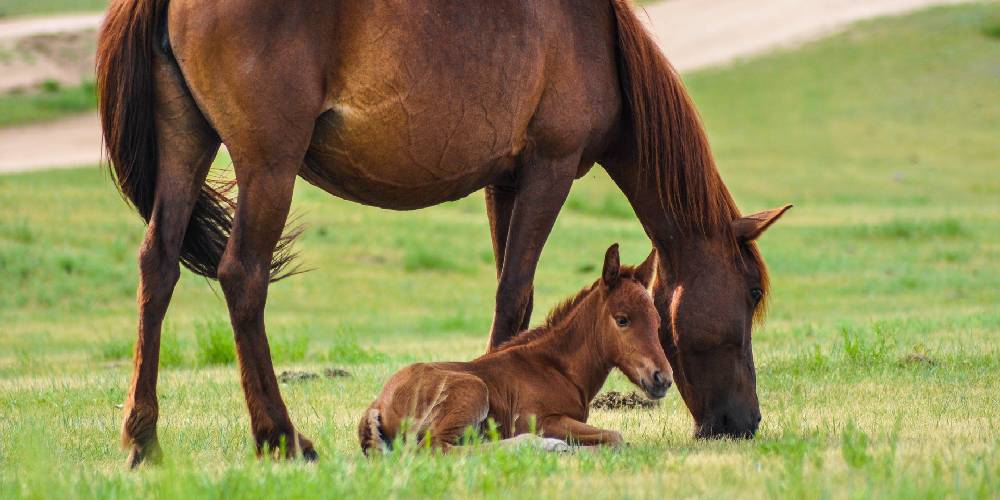The age that horses each live to really depends on a lot of factors. These factors include breed, overall health, conformation, and sometimes even their color.
How Long Do Horses Live?
On Average, horses live to be between twenty-eight and thirty-three years of age. Some horses, however, are known to age well into their forties, and the oldest horse who ever lived, aged to be sixty-two.
Longest Living Breeds
The Arabian
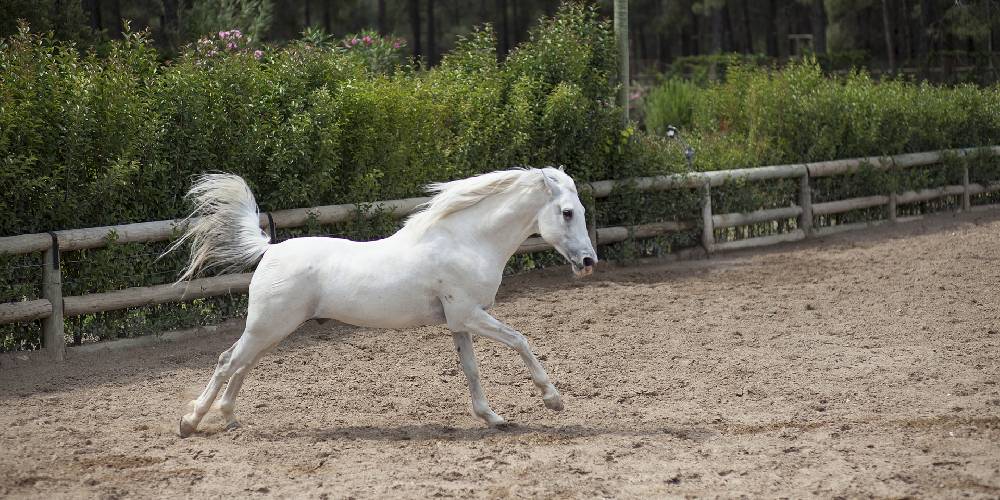
Because of its hardiness and the fact that its ancestors brought the strong will to survive, the Arabian is one of the longest living breeds of horses.
The oldest known Arabian, by the name of Magic, was last documented at the age of forty-six. Her age was documented in 2015, so it is possible that Magic could still be alive today, or at least aged a few more years.
The Arabian Cross
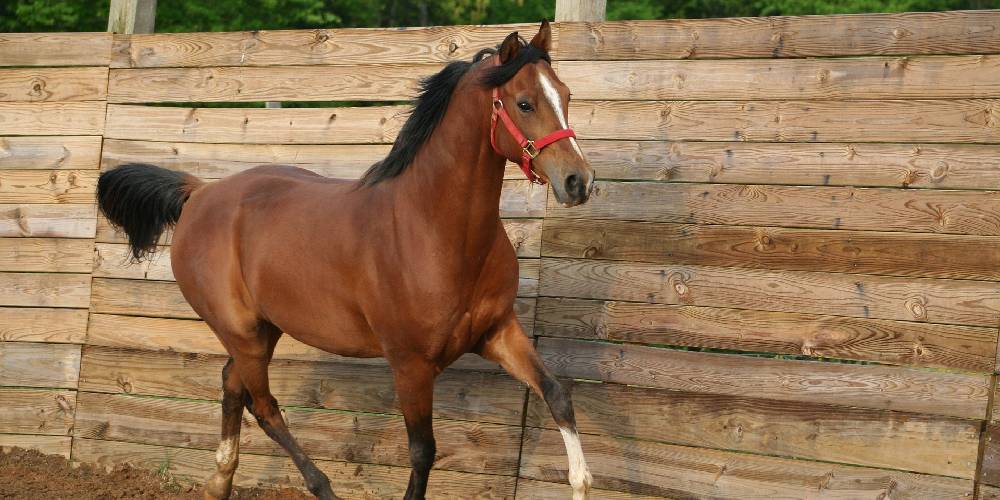
Many half Arabian horses have lived to ripe old ages, this is because the Arabian brings its hardiness and will to survive along with other great traits to its offspring.
One Thoroughbred Arabian cross named Orchid lived to be nearly 50 years old! This horse was abused for much of her life until she was rescued a year before she passed away. She lived out the rest of her days at a horse sanctuary.
A Welsh pony Arabian cross lived to be 51 years of age! This little pony by the name of Badger lived in Wales which is where he eventually passed away. He is listed as the Guinness Book of World Record’s oldest horse even though there are many horses that have passed him in age.
The Appaloosa
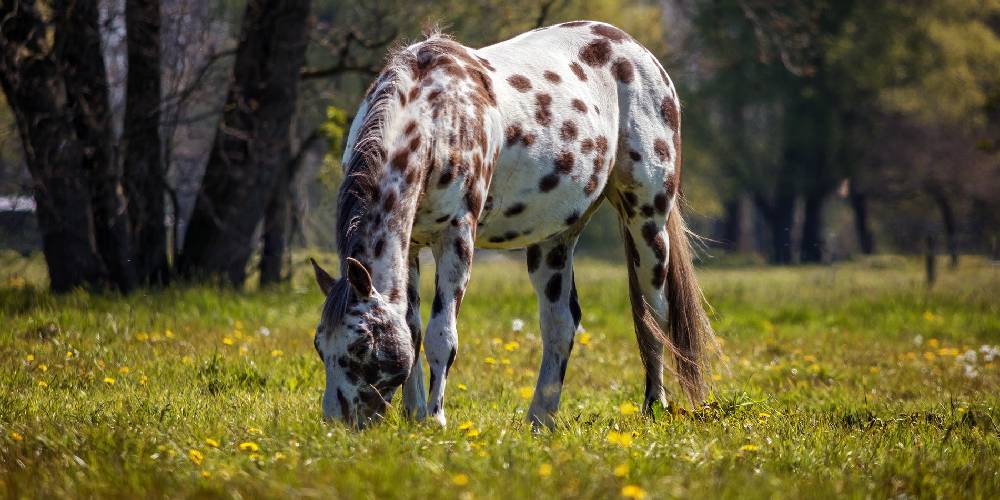
Being a horse greatly valued and used by the American Nez Perce Indians, the Appaloosa has an incredible history of survival and hardiness.
The oldest modern Appaloosa on record is still alive to this day. Born in 1981, this horse is one of the oldest alive today thanks to the breed’s great ancestry.
The Haflinger
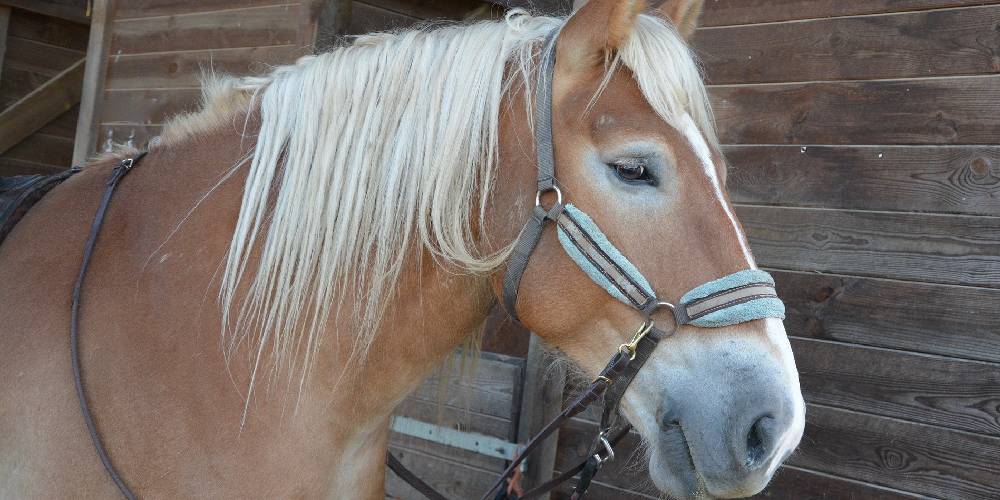
This breed was developed in Austria and Northern Italy. This pony was bred to strive in the thin mountain air. The Haflinger has an average lifespan of around forty years.
The American Paint Horse

The American Paint Horse is of the longest living breeds of horse. This horse is descended from Spanish horses brought to America. The oldest registered paint horse is named Kurrabi Karma and was born in 1981.
Pony Breeds
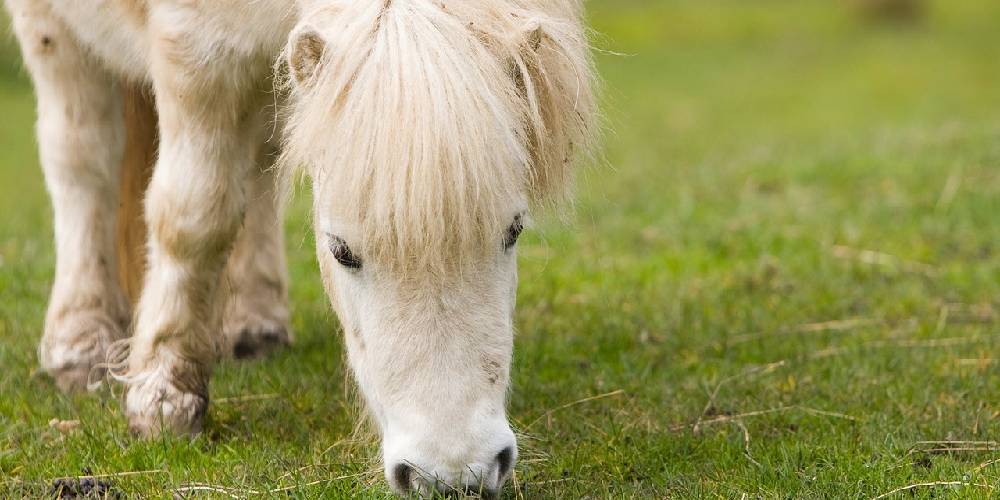
On average, ponies live longer than horses when provided great care. One of the oldest known ponies was documented to be 51 years old back in 2009. This pony could have lived longer, but it is unknown as no further information was provided after that date.
The current oldest known pony lived to be 56 years of age. The name of this pony was Sugar Puff and he was a Shetland/Exmoor cross. Sadly, Sugar Puff had to be put to sleep in 2007.
Shetland Pony
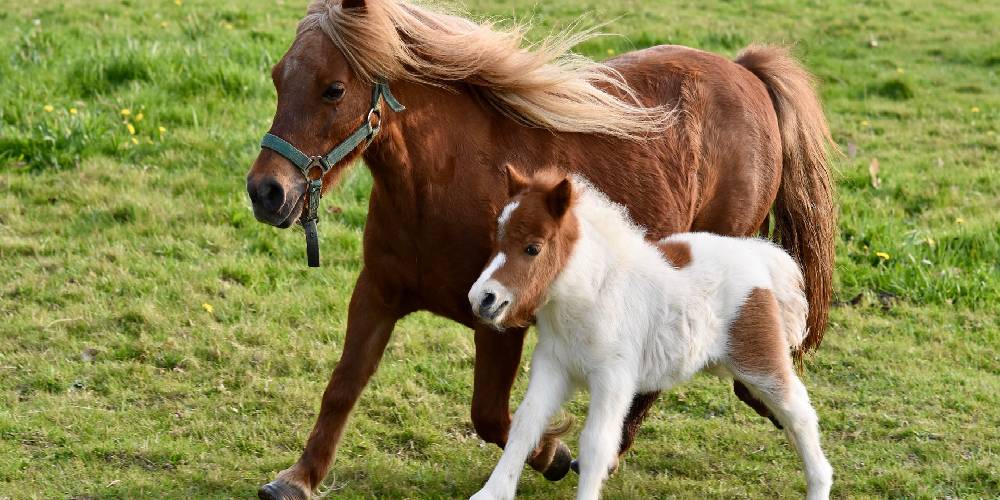
The Shetland pony is a very popular pony used for children’s riding. The oldest documented shetland pony is named Madame Nou and she passed away not long after her 50th birthday.
Overall the average lifespan of the Shetland is about thirty years.
How to Tell the Age of a Horse
Looking at the Teeth
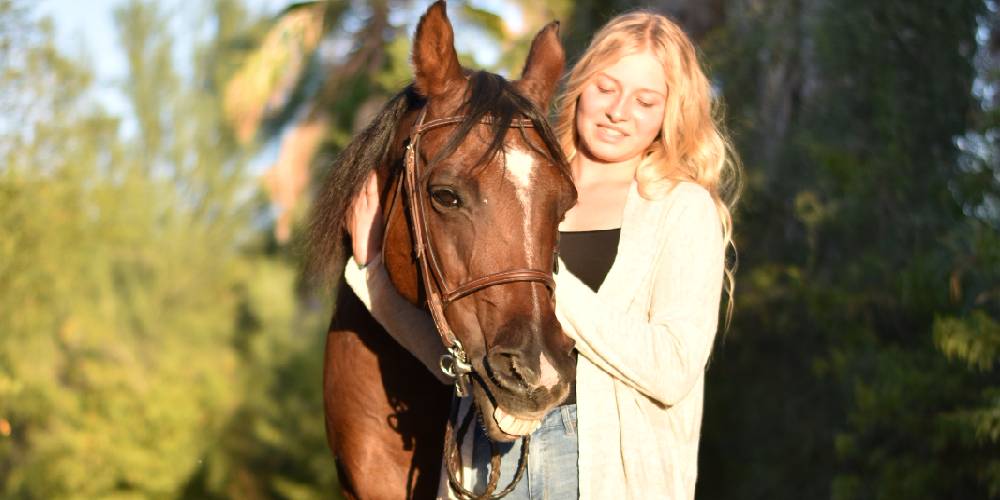
Examining the teeth on a horse used to be one of the only ways to tell how old they are.
The angle where the teeth meet, the Galvayne’s groove, and the presence of ‘cups’ are all indicators of the horse’s age.
Foal
For the first few days, foals don’t have any teeth. When they do come in, about a week after birth, they have two large incisors that are visible giving them the cutest goofy smile!
Yearling to Two Year Old
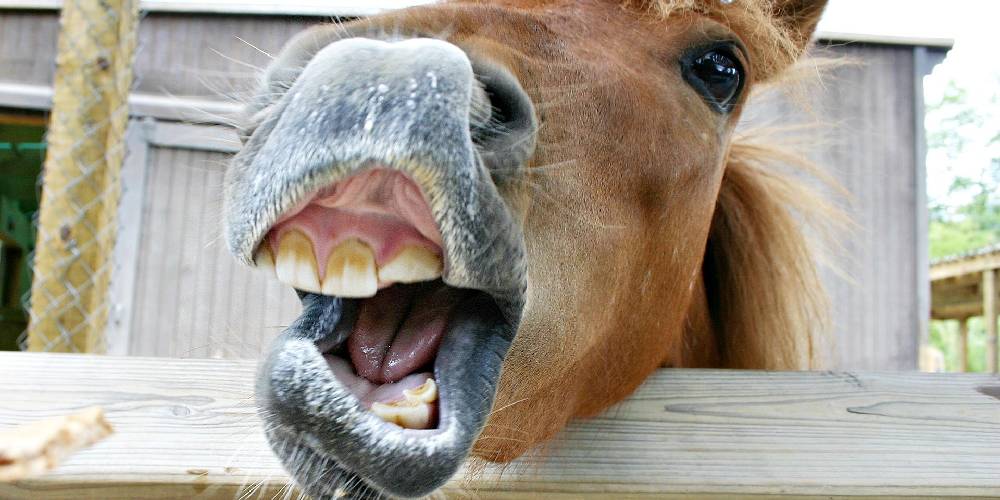
When looking at a yearling’s teeth, you may notice that there are 8 teeth fully grown, and 4 on the sides that are growing in, but aren’t fully in yet. At one year of age, the horse’s teeth will have cups in them which are little grooves on the top of each tooth.
Two year old horses have a cute gap-toothed grin because their bottom teeth are growing back in as adult teeth.
Three to Five Year Old
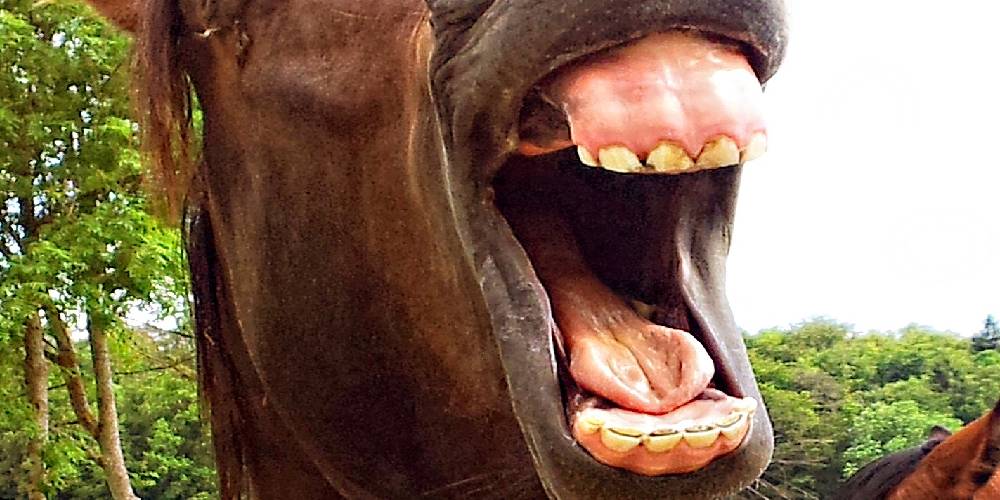
Horses that are three to five years of age have all their front teeth. By the time they are age five, they should have their canine teeth in as well. The cups are still prominent on their teeth and there are few signs of wear. At this age, the horse is still too young to have a Galvayne’s groove.
Five to Seven Years Old
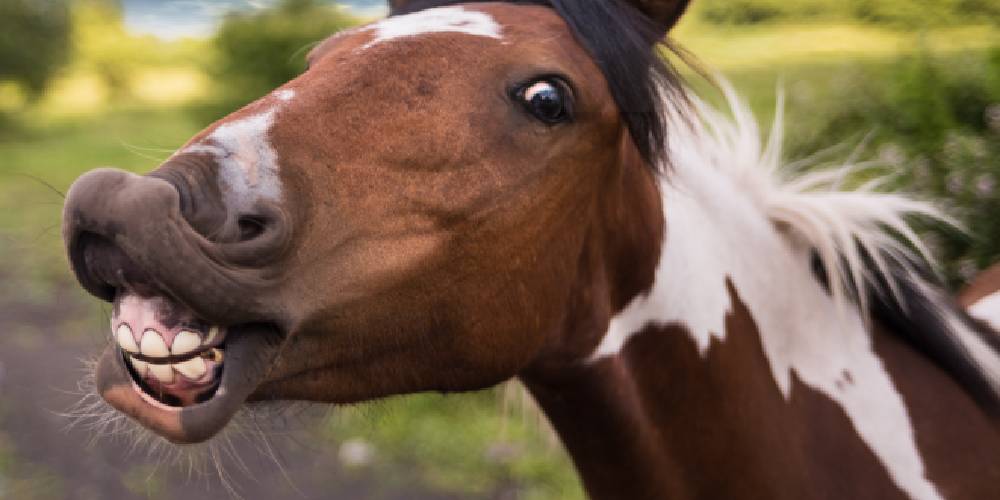
There is more wear on the teeth although the cups are still prominent. The horse’s jaw is very very slightly pushed outward and the Galvayne’s groove still isn’t present.
Seven to Twelve Years Old

Horses between the ages of seven and twelve still have cups in their teeth although they are slightly smaller than when they were younger. The Galvayne’s groove (seen on the outermost front teeth) is starting to appear at the top of the tooth, and the teeth are starting to meet at a very slight point and push slightly outwards more so than at the age of five.
Fifteen to Twenty Years Old
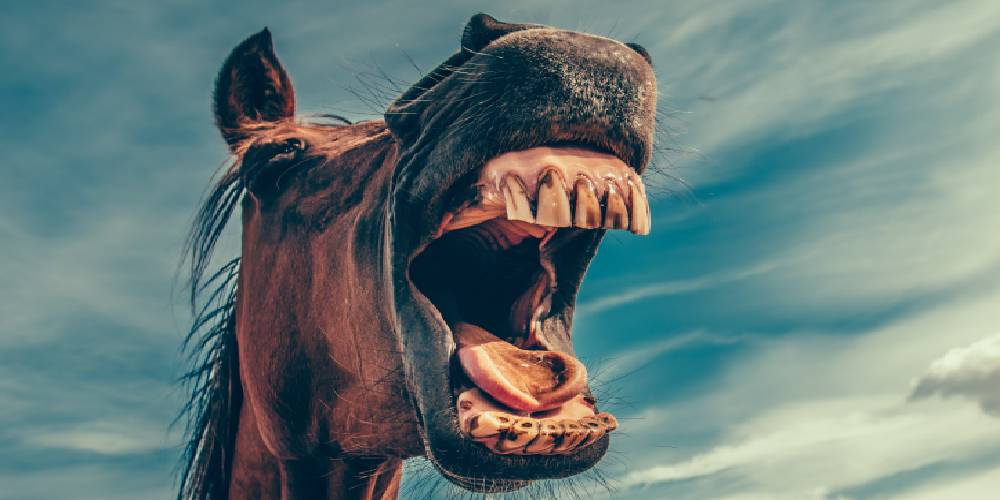
As you can probably see, the Galvayne’s groove is nearly all the way down to the bottom of the tooth, the cups have been reduced to small spots on the teeth, and there is a more pronounced outward slant to the teeth as well.
Twenty Plus Years Old
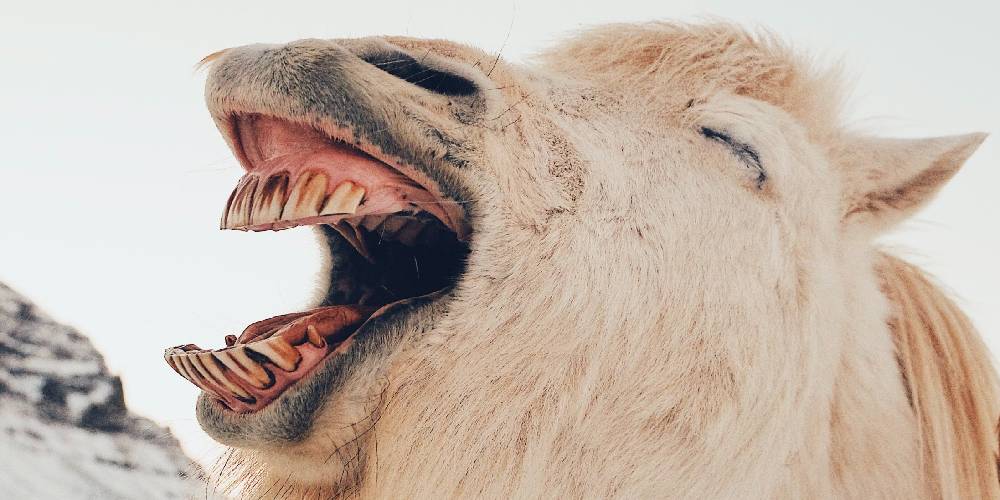
The cups in the teeth are pretty much gone and worn away, the outward slant to the teeth is also very defined and the teeth sometimes may show between the horse’s lips. The Galvayne’s groove is completely down to the bottom of the tooth, and as the horse ages, the groove still start to fade even more from the top down.
Determining a Horse’s Age from Their Body/How They Look
Foal
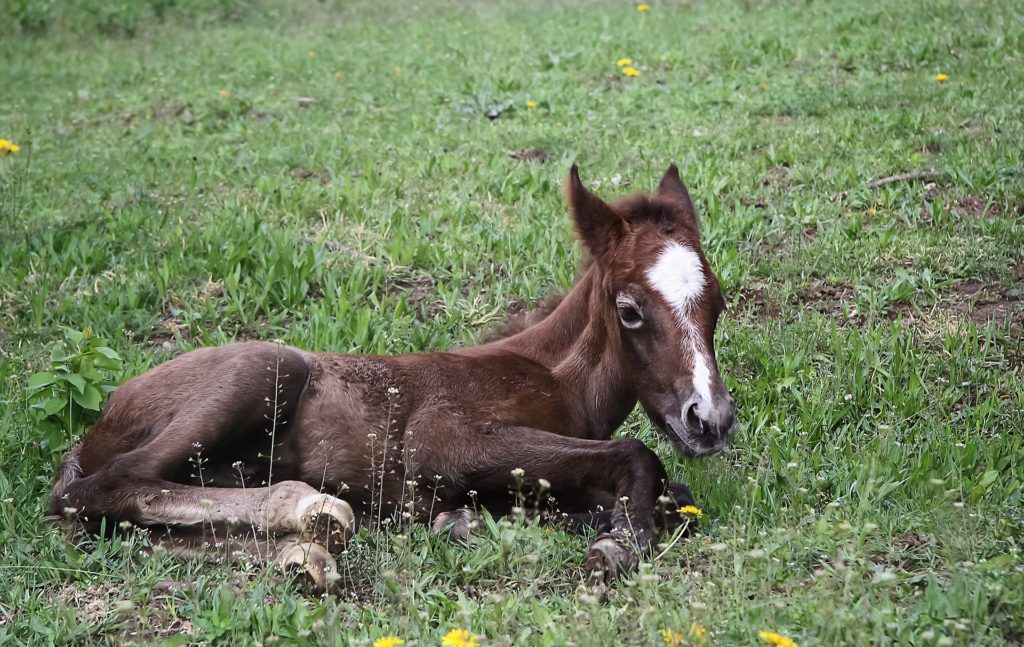
when looking at a foal, it is usually easy to tell that they are just a baby horse. Foals have a short neck, head, and tail, and have long legs that are almost too big for their body.
The foal in the in the picture above is only a day or two old.
Yearling to Two Years Old
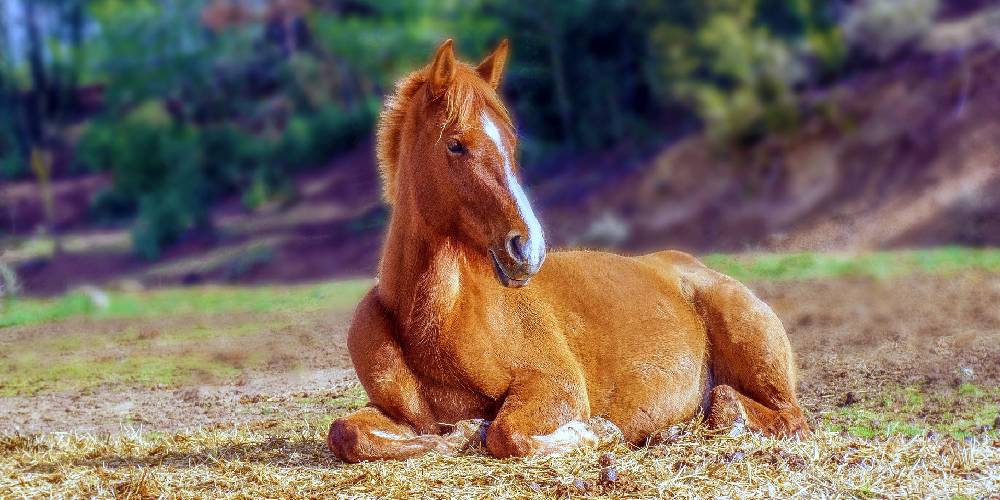
A one to two year old horse is awkwardly built when looking at them. Like a new foal, they still have awkwardly long legs and usually their hindquarters are much higher than their withers. Their tail will be grown out a little bit more and they are much bigger than a foal.
Three to Five Years Old
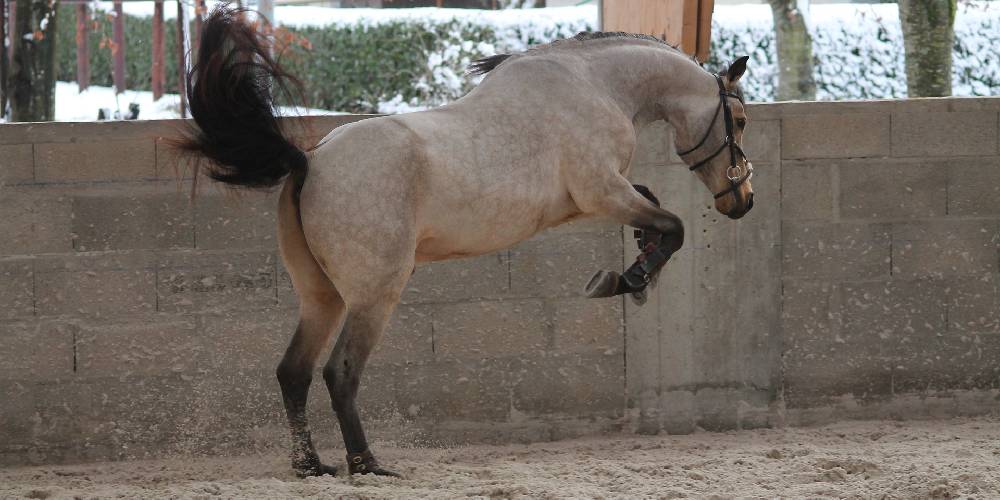
A young three to five year old horse is much more even in proportion. Usually these horses have grown into their legs, have a normal tail, and are strong enough to be ridden.
My horse Bronze was competing in riding classes at the age of three.
Five to Eight Years Old
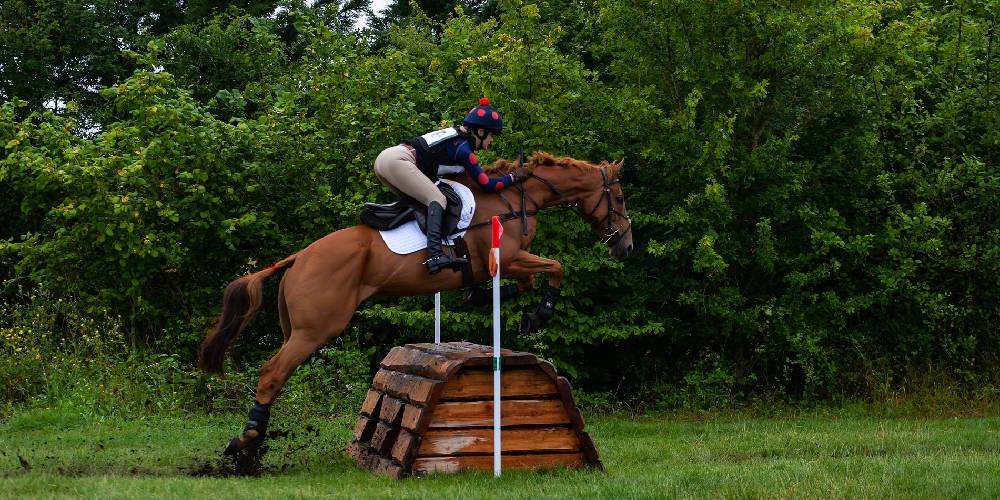
A horse in this age group is likely in their prime. The horse is fully grown with a fully grown tail, proportionate body, and are able to be ridden. Usually these horses are healthy and don’t typically have medical issues.
Ten to Fifteen Years Old

Horses at this age are typically done with their competition career (if that’s what they were used for) and often become lesson horses or pleasure riding horses. Horses that are still in great condition may be used as youth show horses or continue competing in what they did before if they don’t show signs of deterioration.
Fifteen to Twenty Years Old
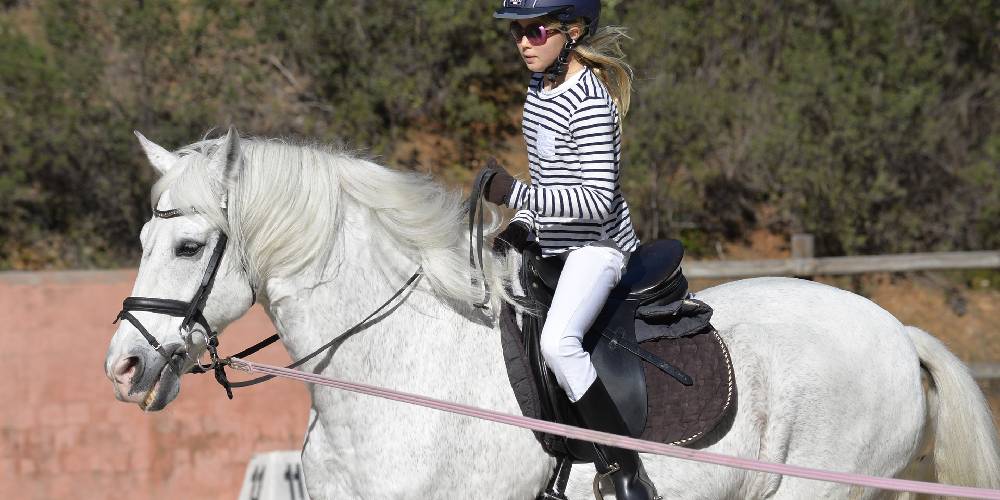
Horses in this age group will typically relax and not have as much energy as they did in their younger years. Often, they are retired from their careers as show horses (assuming that’s what they did) and become lesson horses or, if they acquired an injury, be retired to pasture.
Twenty to Twenty Five Years Old
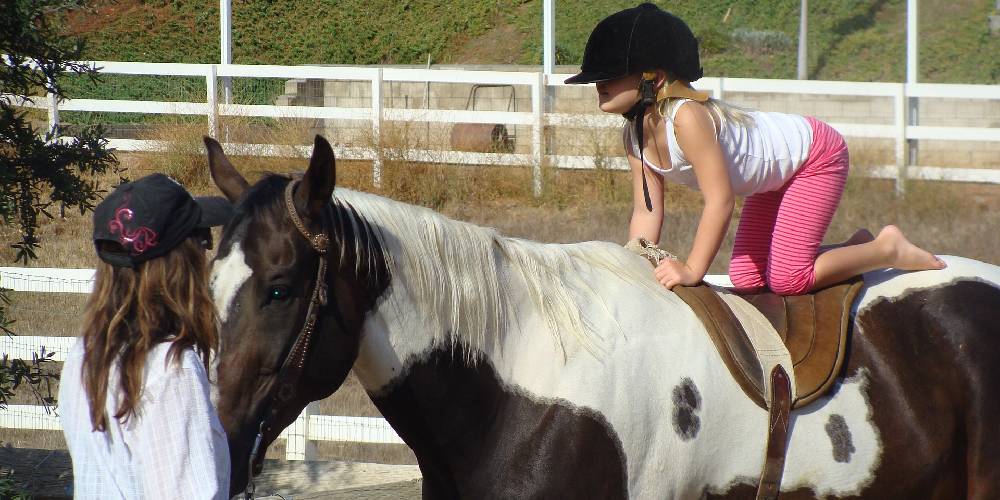
Horses that have reached this milestone are still able to be ridden but typically do light work. Lesson horses are commonly older horses and many of them might be around this age. Many times horses this age develop arthritis, Cushing’s disease, and other health issues. Horses, closer to twenty-five years old, may start to get a swayback as well. Muscle loss and fat gain are common among these horses too.
Twenty Five to Thirty Plus Years Old
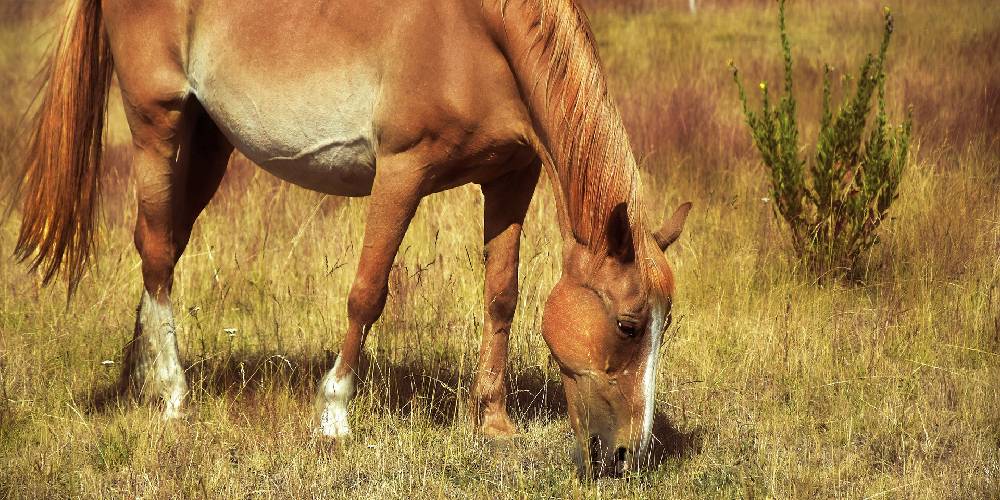
Horses in these age groups typically aren’t able to be ridden anymore. Many old horses like this are retired to pasture to live out the rest of their days. Those that are sound may be ridden by children.
How Conformation Effects Lifespan
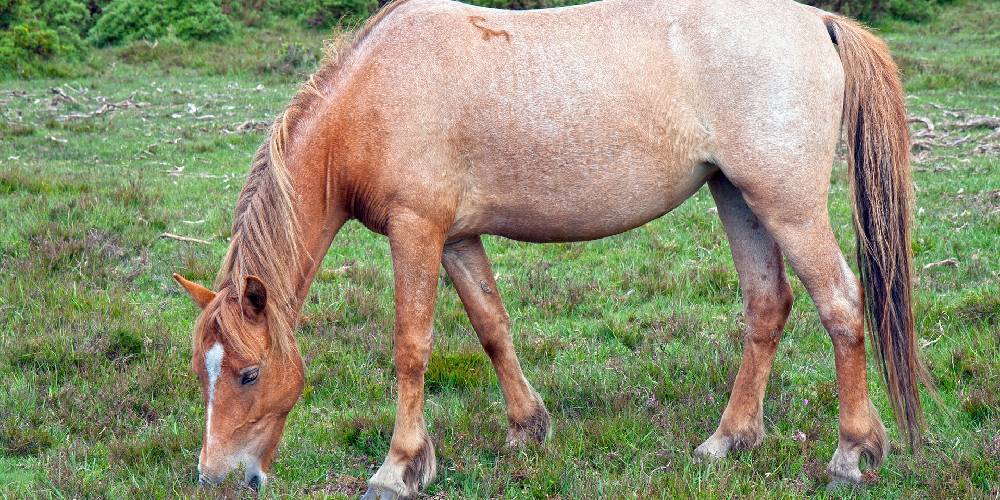
Horses that are well conformed deteriorate slower, are healthier overall and are less frequently injured. Horses with poor conformation have unnatural movement, weak spots, and are much more often lame than the better conformed horse.
A horse’s conformation is crucial when selecting a horse, especially at an older age, because it could be an indicator as to how many working years are left in the horse.
How Color Effects Lifespan
This might sound kind of bizarre, but color does in fact indicate wheter or not a horse might have a shorter life.
Horses that are Albino, white, or Cremello colored are often at risk for cancer. Even palominos and greys have a higher risk for cancer as opposed to bays, blacks, and chestnuts.
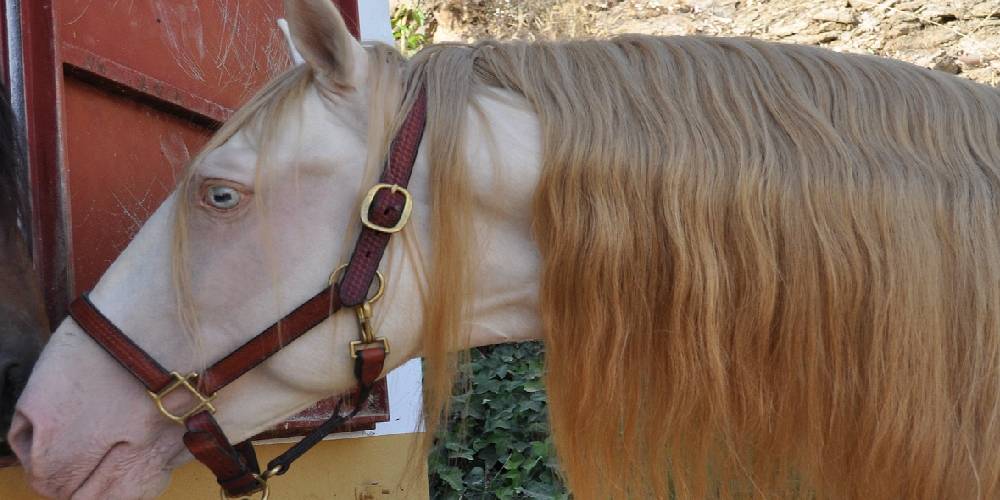
The reason for this is because the skin under some light colored horses is pink rather than black which is at a higher risk for skin cancers. A Cremello horse and a bay horse of the same conformation could have different lifespans just because the Cremello horse is more prone to skin diseases and cancer.

My first horse, a Missouri Fox-Trotter named Show-Me was a palomino. Because of her coat color, she got cancer which sadly caused her to pass away. I have also worked with a few grey Arabians that started to get small tumors on their bodies because of their light coat colors.
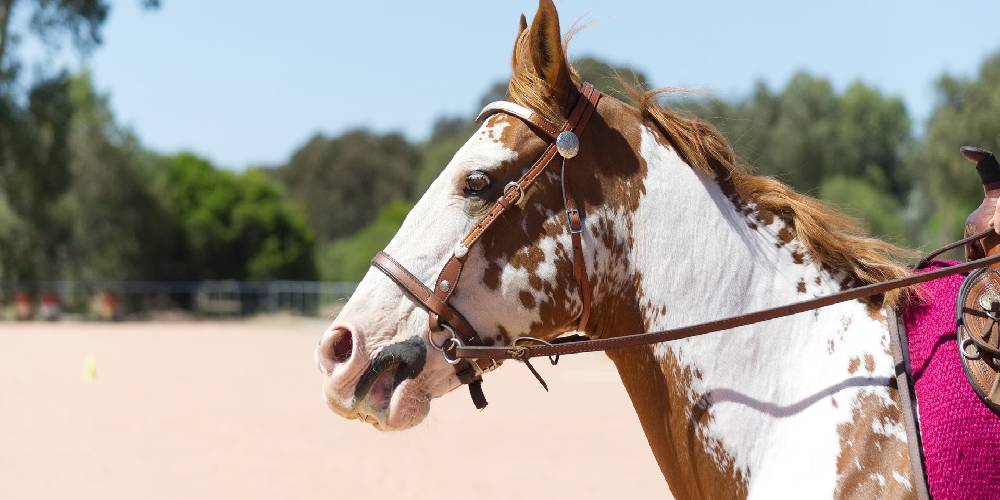
Some people even avoid purchasing horses with white faces and pink noses because those horses are more prone to cancer.
FAQs on Horse Age
Is my horse too old to be ridden?
Horses all deteriorate and are ready to retire at different times. Horses, in my opinion, will let you know when they are done being ridden. If your horse is happy, sound, and healthy and at the age of about 23 or so, there is no reason why you shouldn’t be able to ride them.
When is it safe to start riding a horse?
Horses are fully mature at the age of about four, so usually at three to four years old, horses are ready to be saddle broken and trained.

